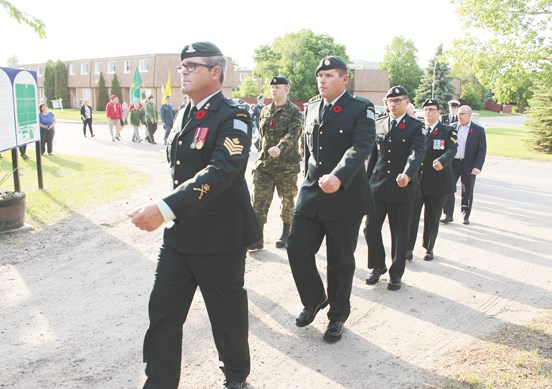Decoration Day has come and gone in Yorkton and most people in the community were largely unaware it happened.
Therein lies a sadness in as much as the people and the efforts the day recognize continue to deserve our thanks.
Decoration Day began in June 1890.
“For 30 years before, Canadians had a different memorial called Decoration Day in which we commemorated our war dead with the laying of real flowers, not in the hopeless gloom of November but in the warm light and optimism of late spring or in summer, often on the weekend closest to June 2, the anniversary of Canada’s forgotten first modern battle, the Battle of Ridgeway in 1866,” describes www.decorationday.ca.
“On Decoration Day, Canadians gathered at war monuments, tended to soldiers’ graves after the ravages of winter and “decorated” them with flowers, wreaths and garlands, prayed that their sacrifices were not in vain and that we had come to be worthy of them. Veterans were showered in flowers as they passed, escorted by phalanxes of children. It was a popular communion of young and old with the souls of our fallen soldiers in a celebration of hope, life and rebirth. We remembered and we remembered well.”
Nowadays, wreaths from Remembrance Day in November are burned and the ashes are spread on the graves of veterans on Decoration Day.
Some will question why we should spend time in June thinking of the contributions of our veterans when Remembrance Day in November is held in high-esteem in the public consciousness.
That short answer is because the contributions of our veterans are worth our thoughts more than once a year.
But it goes deeper.
We need to think about our history or we might well make the mistakes which took us to war in the past.
Racial and religious tension runs rampant is our world today. Those two areas of friction have often triggered conflicts in our history, but we have not yet learned how to grow past the tensions.
Our collective world history also speaks to how key leaders have led the world into war, or to the brink of conflict.
Whether it is Adolph Hitler and Benito Mussolini in World War Two, or U.S. president Ronald Reagan and his Soviet counterparts embroiled in a Cold War for years, leaders can drag us into dire circumstances.
Now we have U.S. president Donald Trump at loggerheads with American allies in the G7 over trade tariffs. While allies at times have issues, there is concern the current issues could cause long term friction.
The situation is made more disquieting as Trump also seems rather cozy with Russian president Vladimir Putin.
That is not to suggest war is close, although threats of nuclear attack between the U.S. and North Korea were very real only a few months ago.
But it is time we remember what so many sacrificed in wars in the past. Hopefully those memories will be what help us do what we can to make sure our leaders do not take us to a place where bombs and bullets replace negotiations.



